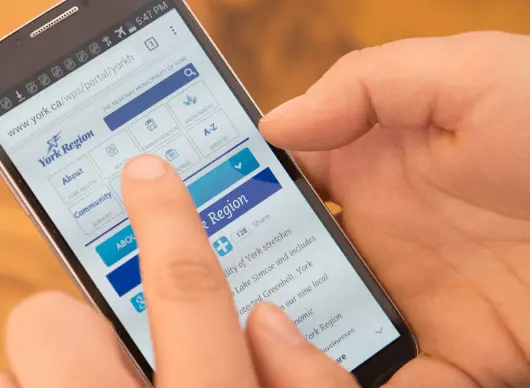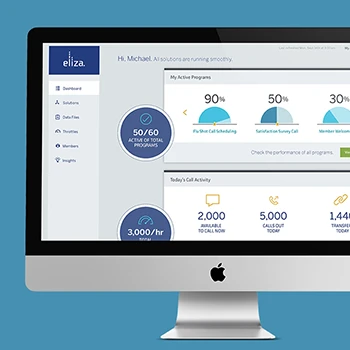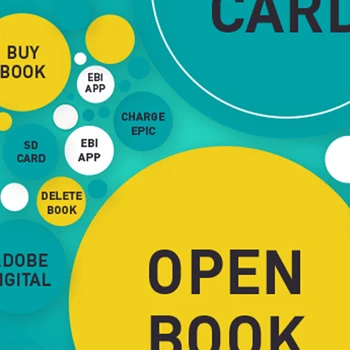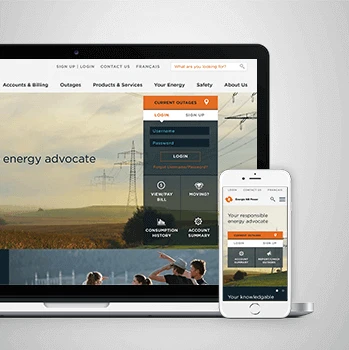What exactly is product MVP prototyping and why is it essential for product development?
Product MVP prototyping creates tangible representations of your ideas that enable testing, communication, and validation before development investment. Prototypes range from simple sketches to interactive digital mockups that make concepts concrete and testable. Following the Experience Thinking framework, prototyping helps validate how users will experience your brand, content, product functionality, and service touchpoints. Prototypes prevent expensive development mistakes by revealing usability issues and user preferences early in the design process.
Tip: Start prototyping earlier than you think necessary - even basic sketches can reveal important insights about user needs and design direction.
How do different fidelity levels of prototypes serve different purposes in product development?
Low-fidelity prototypes like sketches and wireframes focus on structure and user flows without visual details, enabling rapid iteration and concept exploration. Medium-fidelity prototypes add interaction and content details for testing specific workflows and information architecture. High-fidelity prototypes represent near-final experiences for detailed usability testing and stakeholder approval. Each fidelity level answers different questions and serves different audiences throughout the development process.
Tip: Match prototype fidelity to your testing objectives - don't create high-fidelity prototypes when low-fidelity would answer your questions more efficiently.
When should we prototype versus jumping directly into development?
Prototyping should happen whenever there's uncertainty about user needs, interaction patterns, or design concepts that could affect development decisions. The Experience Thinking design phase emphasizes prototyping before building to validate user requirements and experience journeys. Prototyping saves significant development time and cost by identifying issues before coding begins. Even simple prototypes provide valuable insights that improve final product quality and user satisfaction.
Tip: Calculate the cost of fixing design issues after development versus prototyping costs - prototyping typically costs far less than post-development changes.
What's the difference between wireframing and prototyping in the design process?
Wireframing creates structural blueprints that show content organization, navigation hierarchy, and functional requirements without visual design or interactivity. Prototyping adds behavior, interactivity, and often visual design to wireframes, creating testable experiences that simulate user interactions. Wireframes focus on information architecture and layout; prototypes focus on user experience and workflow validation. Both serve important but different purposes in the Experience Thinking design process.
Tip: Use wireframes to establish structure and get stakeholder alignment before investing time in interactive prototypes that add behavioral complexity.
How does prototyping integrate with agile development and sprint cycles?
Prototyping fits naturally into agile workflows as a validation tool before development sprints and a communication tool during development. Quick prototypes can validate user stories and acceptance criteria before development begins. Interactive prototypes serve as living specifications that guide development implementation. Prototyping supports continuous iteration and user feedback integration throughout agile cycles. The key is creating lightweight prototypes that provide development guidance without slowing sprint velocity.
Tip: Create prototype components that align with your development sprint structure to maintain consistency between design and implementation phases.
What role does user testing play in the prototyping process?
User testing validates prototype concepts with real users before development investment, ensuring design decisions reflect actual user needs and behaviors. Testing prototypes reveals usability issues, workflow problems, and feature gaps that might not be apparent to internal stakeholders. The Experience Thinking approach emphasizes keeping users involved throughout design and build phases to maintain user-centered focus. Prototype testing provides evidence for design decisions and builds stakeholder confidence in user experience choices.
Tip: Plan user testing sessions during prototype development rather than only after completion - iterative testing produces better insights and design improvements.
How does foresight design thinking influence prototyping approaches for future user needs?
Foresight design in prototyping means creating experiences that anticipate future user behaviors, technology capabilities, and market conditions rather than just current requirements. We prototype concepts that explore emerging interaction patterns, evolving user expectations, and potential technology integrations that could impact your product's future relevance. This forward-looking approach helps validate product concepts that will remain valuable as user needs and market conditions change over time.
Tip: Include future scenario testing in prototype validation - consider how your design would adapt to different potential technology and user behavior changes.
What's your approach to translating user research insights into prototype concepts?
We transform research insights into user stories and experience journeys that guide prototype creation, ensuring prototypes address real user needs and contexts. Research findings inform interaction patterns, content organization, and feature prioritization reflected in prototype design. The Experience Thinking framework helps connect research insights across brand perception, content needs, product functionality, and service requirements. Prototypes become testable hypotheses about how design solutions will address user problems discovered through research.
Tip: Document the research insights that informed each prototype decision - this creates a clear rationale for design choices and helps evaluate prototype success.
How do you balance stakeholder feedback with user needs during prototype iteration?
Effective prototype iteration requires distinguishing between stakeholder business requirements and user experience needs, finding solutions that address both perspectives. We facilitate discussions that examine stakeholder feedback against user research evidence and testing results. Experience Thinking helps evaluate feedback across all experience dimensions to identify solutions that work for users and business goals. The process involves collaborative refinement rather than choosing sides between stakeholders and users.
Tip: Present user testing evidence alongside stakeholder feedback sessions to ground discussions in user behavior rather than just internal preferences.
What tools and technologies do you use for different types of prototyping?
Tool selection depends on prototype purpose, audience, and fidelity requirements rather than following a standard approach. We use paper and sketching for early concept exploration, digital wireframing tools for structure definition, and interactive prototyping platforms for user testing. The focus remains on creating effective communication and testing tools rather than impressive technology demonstrations. Tool choices prioritize speed and clarity over technical sophistication when rapid iteration is needed.
Tip: Choose prototyping tools based on your audience and objectives rather than tool capabilities - simple tools often produce more effective prototypes than complex platforms.
How do you approach prototyping for complex enterprise software versus consumer products?
Enterprise prototyping requires understanding complex user hierarchies, workflow integration, and organizational constraints alongside individual user needs. Consumer product prototyping focuses more on individual user motivations, market positioning, and adoption barriers. Both benefit from Experience Thinking principles, but enterprise prototypes need additional attention to service experience elements like training, implementation, and ongoing support. Prototype complexity and testing approaches adapt to different user contexts and decision-making processes.
Tip: For enterprise prototypes, include workflow context and integration scenarios rather than just isolated task completion to reflect real usage environments.
What's your process for creating prototypes that work across different devices and platforms?
Cross-platform prototyping starts with identifying core user goals and workflows that remain consistent across devices, then adapts interaction patterns to leverage each platform's strengths. We prototype key user journeys across different screen sizes and interaction modalities to ensure experience consistency while respecting platform conventions. The approach balances design system consistency with platform-specific optimization. Testing prototypes on actual devices reveals interaction issues that desktop testing might miss.
Tip: Prototype platform-specific interactions early rather than trying to force identical experiences across all devices - native platform patterns often provide better user experiences.
How do you handle prototyping for products that integrate with existing user workflows and systems?
Integration prototyping requires understanding user workflow contexts, existing tool relationships, and change management challenges beyond just new product functionality. We prototype transition points between your product and existing tools, data sharing scenarios, and workflow integration moments that impact adoption success. Prototypes include context switching, data import/export, and user mental model transitions that affect real-world usage. Testing validates integration scenarios alongside core product functionality.
Tip: Prototype the edges and integration points of your product rather than just core functionality - these transition moments often determine user adoption success.
What role does participatory design play in your prototyping process?
Participatory design brings users and stakeholders into the prototype creation process, enabling collaborative ideation and co-creation that reveals insights traditional design methods might miss. Users contribute tacit knowledge through hands-on prototype manipulation and modification that emerges when they're solving their own problems. Collaborative prototype sessions generate creative solutions guided by experienced designers while incorporating user expertise. This approach creates stronger user buy-in and reveals solution approaches that purely internal design processes wouldn't discover.
Tip: Include users in early prototype creation sessions rather than just testing completed prototypes - their creative input often reveals solution opportunities you wouldn't discover alone.
How does prototyping impact product development timelines and budgets?
Prototyping requires initial time investment but typically reduces overall development time by preventing expensive design changes during development. Early prototype testing identifies usability issues when they're cheap to fix rather than after development when changes become costly. The Experience Thinking approach emphasizes front-loading design validation to avoid expensive rework later. Organizations often see faster development cycles and higher user satisfaction when prototyping is integrated into their development process.
Tip: Track the cost of design changes in past projects to demonstrate prototyping ROI - prevention costs far less than correction.
What business risks does prototyping help mitigate during product development?
Prototyping reduces market risk by validating user need and product-market fit before development investment. Usability risk decreases through early identification of user experience issues that could impact adoption. Technical risk reduces when prototypes reveal integration or performance requirements before development begins. Business model risk decreases when prototypes validate value propositions and user willingness to engage with proposed solutions.
Tip: Document risk assumptions that prototypes will test rather than building prototypes without clear validation objectives - this focuses prototype investment on high-impact uncertainties.
How do prototypes help secure stakeholder buy-in and development funding?
Prototypes make abstract concepts tangible and testable, enabling stakeholders to experience proposed solutions rather than just reading descriptions. User testing results provide evidence for design decisions and build confidence in product direction. Interactive prototypes demonstrate product potential and help stakeholders visualize return on investment. The Experience Thinking approach ensures prototypes address business goals alongside user needs, creating compelling cases for continued investment.
Tip: Create prototype demonstrations that connect user experience improvements to specific business outcomes stakeholders care about rather than just showing functionality.
Can prototyping help identify new market opportunities or product extensions?
Prototype testing often reveals user needs and usage patterns that suggest market expansion opportunities beyond initial product scope. Users interact with prototypes in unexpected ways that highlight additional use cases or feature opportunities. Experience lifecycle prototyping identifies gaps in user journeys that could be filled by additional products or services. Testing prototypes with different user segments sometimes reveals market opportunities in unexpected areas.
Tip: Document unexpected user behaviors and feature requests during prototype testing - these insights often reveal future product opportunities worth investigating.
How does prototyping support competitive positioning and market differentiation?
Prototyping enables testing of differentiated user experiences before competitors copy concepts, providing first-mover advantages in user experience innovation. User testing reveals which differentiating features actually matter to users versus just seeming innovative internally. Prototypes help validate positioning strategies by testing user perceptions and value propositions. The approach enables rapid iteration toward genuinely superior user experiences rather than just feature parity with competitors.
Tip: Test prototype concepts against user expectations set by competitive products to ensure your differentiation creates genuine user value rather than just novelty.
What metrics do you use to measure prototyping success and ROI?
Prototype success measurement includes both immediate testing metrics like task completion rates and user satisfaction, and longer-term business impact like reduced development time and improved user adoption. We track design iteration cycles, stakeholder approval speed, and development change orders to demonstrate prototyping efficiency benefits. User engagement metrics from prototype testing often predict market success more accurately than internal stakeholder opinions. Success measurement connects prototype insights to business outcomes.
Tip: Establish baseline metrics for design change costs and stakeholder approval time before implementing prototyping processes to demonstrate improvement over time.
How do prototypes help with regulatory compliance and risk management in regulated industries?
Regulatory prototyping tests compliance requirements early in design to avoid expensive remediation after development. Prototypes enable validation of required disclosures, consent processes, and security measures while maintaining good user experiences. Testing prototypes with compliance stakeholders reveals practical implementation challenges before development commitment. The service experience component of Experience Thinking particularly addresses compliance training and support requirements that regulated products need.
Tip: Include compliance stakeholders in prototype review and testing sessions rather than treating compliance as a constraint imposed after design completion.
What's the right level of detail for prototype testing at different stages of product development?
Testing objectives determine appropriate prototype detail rather than development stage alone. Early concept testing requires minimal detail - just enough to communicate core ideas and workflows. Usability testing needs functional interaction but not final visual design. User acceptance testing requires high fidelity to generate realistic feedback. The key is matching prototype investment to testing goals rather than over-building prototypes for simple validation questions.
Tip: Define specific testing questions before determining prototype fidelity - this prevents unnecessary detail that doesn't serve testing objectives.
How do you recruit and select users for prototype testing sessions?
User recruitment focuses on finding participants who match target user personas and have relevant experience with problem contexts rather than just demographic characteristics. We recruit based on user goals, domain knowledge, and workflow contexts that affect product usage. Testing participants should represent actual usage scenarios and decision-making contexts. Remote testing capabilities expand recruitment reach while maintaining participant quality. Precise recruitment criteria matter more than large sample sizes.
Tip: Recruit users based on behavioral characteristics and usage contexts rather than just demographics - these factors better predict how people will interact with your product.
What testing methods work best for different types of prototypes and research questions?
Testing method selection depends on research objectives and prototype capabilities rather than following standard approaches. Concept testing works well with low-fidelity prototypes to validate ideas and user understanding. Usability testing requires interactive prototypes that support task completion. Walkthroughs work effectively with wireframes to test information architecture and navigation. Think-aloud protocols reveal user mental models and decision-making processes across all prototype types.
Tip: Match testing methods to specific insights you need rather than using standard usability testing for all prototype validation - different methods reveal different types of insights.
How do you handle testing for accessibility and inclusive design during prototyping?
Accessibility testing during prototyping requires recruiting users with diverse abilities and testing with assistive technologies to identify barriers early. We examine prototype navigation patterns, content structure, and interaction methods to ensure inclusive access. Color contrast, keyboard navigation, and screen reader compatibility get evaluated during prototype development rather than after completion. Inclusive design testing often reveals solutions that improve experiences for all users, not just those with specific accessibility needs.
Tip: Include accessibility considerations in initial prototype planning rather than retrofitting later - early inclusion often reveals better design solutions for everyone.
What do you do when prototype testing reveals fundamental problems with the product concept?
Fundamental concept problems discovered through testing require honest evaluation of user feedback against business assumptions and market hypotheses. We help distinguish between implementation issues that can be fixed through design iteration and concept issues that require strategic reconsideration. Sometimes testing reveals that user problems are different than assumed or that proposed solutions don't address real needs. Early discovery of concept issues prevents expensive development of products users don't want.
Tip: Approach prototype testing with genuine curiosity rather than seeking validation - discovering concept problems early saves far more resources than confirming assumptions.
How do you synthesize and prioritize feedback from multiple prototype testing sessions?
Feedback synthesis involves identifying patterns across testing sessions rather than responding to individual user comments or preferences. We distinguish between usability issues that affect task completion and preference issues that reflect individual taste. Feedback prioritization considers frequency of issues, impact on user success, and alignment with business objectives. The Experience Thinking framework helps evaluate feedback across brand perception, content effectiveness, product usability, and service delivery dimensions.
Tip: Focus on behavioral patterns and task completion issues rather than stated preferences - what users do often differs from what they say they want.
Can prototypes be used to test emotional responses and brand perception alongside usability?
Advanced prototyping can test emotional responses through realistic brand expression, content tone, and interaction personality that reflect intended brand characteristics. Visual and interactive prototypes enable testing of brand perception, trust building, and emotional engagement alongside functional usability. The brand experience component of Experience Thinking ensures prototypes reflect brand strategy consistently. Testing both functional and emotional responses provides complete validation of user experience design decisions.
Tip: Include brand-representative content and visual design in prototypes when testing emotional response - generic placeholder content often produces misleading feedback about user engagement.
How do prototypes translate into development specifications and technical requirements?
Effective prototypes become living specifications that guide development implementation through annotated wireframes, interaction patterns, and design system components. We create prototypes that demonstrate user flows, state changes, and edge cases that developers need to understand for accurate implementation. Technical specifications connect prototype behaviors to code requirements while maintaining design intent. The goal is preserving user experience quality from prototype through final implementation.
Tip: Include developers in prototype review sessions to identify technical constraints and opportunities that could affect implementation before development begins.
What's your approach to prototyping responsive designs and adaptive experiences?
Responsive prototyping demonstrates how user experiences adapt across device sizes and interaction contexts while maintaining core functionality and user value. We prototype key breakpoints and interaction transitions that affect user task completion and satisfaction. Testing responsive prototypes on actual devices reveals interaction issues that desktop simulation might miss. The approach balances design system consistency with platform-specific optimization for optimal user experiences.
Tip: Prototype responsive behavior for critical user tasks rather than trying to demonstrate every responsive state - focus on scenarios that most impact user success.
How do you handle prototyping for emerging technologies like AI, voice interfaces, or AR/VR?
Emerging technology prototyping focuses on user mental models and interaction patterns rather than technical implementation details. We prototype user expectations for AI behavior, voice command structures, or spatial interactions that affect experience design. Foresight design thinking helps anticipate how user expectations might evolve as technologies mature. Testing prototypes reveals user comfort levels and adoption barriers that influence product strategy decisions.
Tip: Prototype user interactions and expectations for emerging technologies rather than technical capabilities - understanding user mental models enables better experience design decisions.
What role do design systems play in your prototyping process?
Design systems provide reusable components and patterns that accelerate prototype creation while ensuring consistency with broader product ecosystem. Prototyping often reveals new component needs or interaction patterns that enhance design system evolution. We use existing design system elements when available and identify new patterns through prototype development. The approach creates bidirectional value - prototypes benefit from design system efficiency while contributing to system growth.
Tip: Document new interaction patterns discovered during prototyping for potential design system inclusion - this creates reusable value beyond individual project scope.
How do you approach prototyping for complex data visualizations and interactive graphics?
Data visualization prototyping requires understanding user mental models for information interpretation and decision-making processes rather than just visual presentation. We prototype with realistic data scenarios that test user comprehension and task completion rather than placeholder content. Interactive visualization prototypes demonstrate filtering, exploration, and comparison workflows that affect user success. Testing reveals whether visualizations enable user insights or create confusion.
Tip: Use realistic data scenarios in visualization prototypes rather than perfect demo data - real-world data complexity often reveals design issues that clean data hides.
What's your approach to prototyping API integrations and third-party service connections?
API integration prototyping simulates data flows, loading states, and error conditions that affect user experiences even when backend services aren't fully developed. We prototype user workflows that depend on external services to test experience continuity and error recovery. Mock data and simulated responses enable user testing of integration scenarios before technical implementation. The focus remains on user experience impact rather than technical integration details.
Tip: Prototype error states and loading scenarios for API integrations rather than just success cases - these edge cases often determine user experience quality in production.
How do you ensure prototype insights translate into production quality experiences?
Production translation requires maintaining prototype insights through development cycles via design reviews, implementation guidance, and quality assurance processes. We document design rationale and testing insights that inform implementation decisions when technical constraints require adaptations. Experience support throughout development helps preserve user experience quality while accommodating technical realities. The approach balances design intent with implementation feasibility.
Tip: Create implementation guidelines that connect prototype insights to specific development decisions rather than just handing off final prototypes without context.
How does Experience Thinking methodology enhance traditional prototyping approaches?
Experience Thinking ensures prototypes address holistic user experiences across brand perception, content effectiveness, product functionality, and service delivery rather than just interface design. This approach reveals connection points between different experience elements that single-channel prototyping might miss. Experience lifecycle prototyping examines user journeys from awareness through advocacy rather than just product usage. The framework helps identify gaps and opportunities that create more connected user experiences.
Tip: Map your current prototyping approach against all four Experience Thinking quadrants to identify opportunities for creating more connected user experience validation.
What's your approach to prototyping service experiences and multi-touchpoint journeys?
Service experience prototyping includes human interactions, physical environments, and digital touchpoints that create complete user journeys rather than just product interfaces. We prototype service blueprints through role-playing, staging, and walkthrough methods that test both front-stage and back-stage elements. Testing validates service consistency across different interaction points and identifies handoff moments that affect user satisfaction. The approach ensures service experiences work cohesively rather than optimizing individual touchpoints in isolation.
Tip: Prototype service transition points and handoffs between different touchpoints rather than just individual interaction moments - these connections often determine overall experience quality.
How do you prototype for subscription products and long-term user relationships?
Subscription prototyping focuses on user lifecycle experiences that create ongoing value and prevent churn through deepening engagement over time. We prototype onboarding experiences, feature discovery patterns, advanced user workflows, and renewal decision factors. Testing examines how user needs evolve through continued usage and how product experiences should adapt to maintain relevance. The approach emphasizes user success and value realization rather than just initial adoption.
Tip: Prototype user experience evolution over time rather than just initial interactions - long-term user success drives subscription business models.
Can prototyping help with digital transformation and legacy system modernization?
Transformation prototyping balances user experience improvements with organizational change management and technical modernization requirements. We prototype migration experiences that maintain business continuity while improving user satisfaction. Testing validates transformation approaches with current users who need to adapt to new systems. Prototypes demonstrate modernization benefits while addressing change adoption concerns that affect transformation success.
Tip: Prototype change management experiences alongside new functionality to address user adoption challenges that often determine transformation success.
How do you approach AI integration prototyping and intelligent user experiences?
AI prototyping requires understanding user mental models of intelligent behavior, trust building, and the balance between automation and user control. We prototype AI decision transparency, error recovery, and user override capabilities that affect user acceptance. Testing reveals user comfort levels with AI assistance and preferences for automated versus manual control. Prototypes simulate AI behavior patterns and failure modes to validate user experience design before complex development investment.
Tip: Prototype AI transparency and user control mechanisms rather than just automated functionality - user trust and understanding often determine AI feature adoption success.
What's your approach to prototyping omnichannel and ecosystem experiences?
Omnichannel prototyping demonstrates user journey continuity across different channels and touchpoints while maintaining consistent experience quality and brand perception. We prototype cross-channel handoffs, data synchronization, and experience personalization that work across different interaction modalities. Testing validates channel-specific optimization while preserving overall experience coherence. The approach balances channel strengths with ecosystem consistency requirements.
Tip: Prototype channel transition scenarios rather than just individual channel experiences - seamless handoffs often determine omnichannel experience success.
How does foresight design inform prototyping for future user behaviors and technology changes?
Foresight design prototyping examines emerging user behavior patterns, evolving expectations, and technology capabilities that will shape future product requirements. We prototype concepts that anticipate user need evolution rather than just responding to current problems. This future-oriented approach helps validate product strategies that remain relevant as markets and user expectations change. Prototypes become tools for exploring potential futures rather than just current solutions.
Tip: Balance future-oriented prototyping with current user needs - ensure innovation addresses both immediate user value and longer-term market evolution to maintain relevance.
How do you collaborate with internal development and product management groups during prototyping?
Successful prototyping requires close collaboration with development and product management to ensure prototypes serve their decision-making and implementation needs. We involve developers in prototype review to identify technical constraints and opportunities early. Product managers contribute business context and success metrics that inform testing approaches. Collaborative prototyping creates shared understanding and buy-in for design decisions across all implementation stakeholders.
Tip: Include development and product stakeholders in prototype planning sessions rather than just final reviews - early involvement improves implementation feasibility and stakeholder support.
What deliverables do you provide beyond the prototypes themselves?
Prototype deliverables include documentation of design rationale, testing insights, user feedback synthesis, and implementation guidelines that support successful development. We provide annotated wireframes, interaction specifications, design system components, and success metrics that guide development implementation. Testing reports include both quantitative results and qualitative insights that inform ongoing product decisions. All deliverables focus on actionable insights rather than academic documentation.
Tip: Specify which deliverables your internal stakeholders need for their decision-making and implementation processes - customized outputs often provide more practical value than standard documentation.
How do you handle stakeholder feedback and iteration cycles during prototype development?
Effective stakeholder engagement involves structured feedback sessions that focus on specific decisions and validation objectives rather than general reactions. We facilitate discussions that examine feedback against user research evidence and business requirements. Iteration cycles balance stakeholder input with user testing results to find solutions that work for both audiences. The process maintains forward momentum while incorporating necessary changes.
Tip: Structure stakeholder feedback sessions around specific decisions rather than open-ended reviews - this produces more actionable input and faster iteration cycles.
What ongoing support do you provide during prototype implementation and development?
Implementation support includes design reviews, technical consultation, user testing validation, and adaptation guidance as development constraints require prototype modifications. We help translate prototype concepts into development-friendly specifications and provide guidance when implementation challenges require design adjustments. Support includes quality assurance reviews to ensure production experiences maintain prototype insights and user experience quality.
Tip: Schedule regular prototype implementation reviews during development rather than only engaging when problems arise - proactive guidance prevents experience quality drift during development.
How do you measure the success of prototyping engagements beyond immediate deliverables?
Prototyping success measurement includes both immediate testing results and longer-term impact on product success and organizational learning. We track user adoption rates, satisfaction scores, and business metrics that connect prototype insights to market performance. Success also includes improved stakeholder confidence, faster development cycles, and reduced post-launch design changes. Measurement demonstrates prototyping value and guides process improvements.
Tip: Establish success metrics during prototype planning rather than after completion - this ensures prototyping focuses on measurable business and user outcomes from the beginning.
Can you help our organization build internal prototyping capabilities?
Capability building involves methodology transfer, tool training, and process development that enables ongoing internal prototyping without external dependence. We provide prototyping frameworks, testing approaches, and collaboration methods that organizations can use independently. Training covers when to prototype, how to select appropriate fidelity levels, and how to conduct effective user testing. The goal is creating sustainable prototyping practices rather than project-by-project consultation.
Tip: Start capability building with specific methodology training for key stakeholders rather than trying to transform entire organizational processes immediately - focused skill development enables broader adoption over time.
How do prototyping insights influence longer-term product strategy and roadmap planning?
Prototyping insights inform strategic product decisions by revealing user behavior patterns, feature prioritization, and market opportunity validation that guide roadmap development. Testing results help distinguish between user requests that address real needs versus feature preferences that don't impact satisfaction. Prototype insights often reveal new product opportunities or strategic directions that weren't apparent through market research alone. The approach connects tactical design validation to strategic business planning.
Tip: Document strategic insights from prototype testing alongside immediate design feedback - these broader learnings often provide valuable input for future product planning and market strategy decisions.












